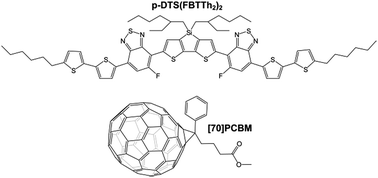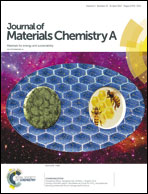Reduced bimolecular recombination in blade-coated, high-efficiency, small-molecule solar cells†
Abstract
Realization of the full promise of solution deposited photovoltaic devices requires processes compatible with high-speed manufacturing. We report the performance and morphology of blade-coated bulk heterojunction devices based on the small molecule donor p-DTS(FBTTh2)2 when treated with a post-deposition solvent vapor annealing (SVA) process. SVA with tetrahydrofuran improves the device performance of blade-coated films more than solvent additive processing (SA) with 1,8-diiodooctane. In spin-coating, SA and SVA achieve similar device performance. Our optimized, blade coated, SVA devices achieve power conversion efficiencies over 8% and maintain high efficiencies in films up to ≈250 nm thickness, providing valuable resilience to small process variations in high-speed manufacturing. Using impedance spectroscopy, we show that this advantageous behavior originates from highly suppressed bimolecular recombination in the SVA-treated films. Electron microscopy and grazing-incidence X-ray scattering experiments show that SA and SVA both produce highly crystalline donor domains, but SVA films have a radically smaller domain size compared to SA films. We attribute the different behavior to variations in initial nucleation density and relative ability of SVA and SA to control subsequent crystal growth.



 Please wait while we load your content...
Please wait while we load your content...